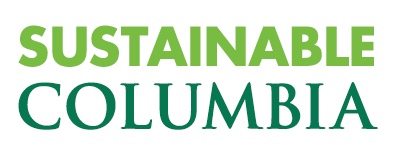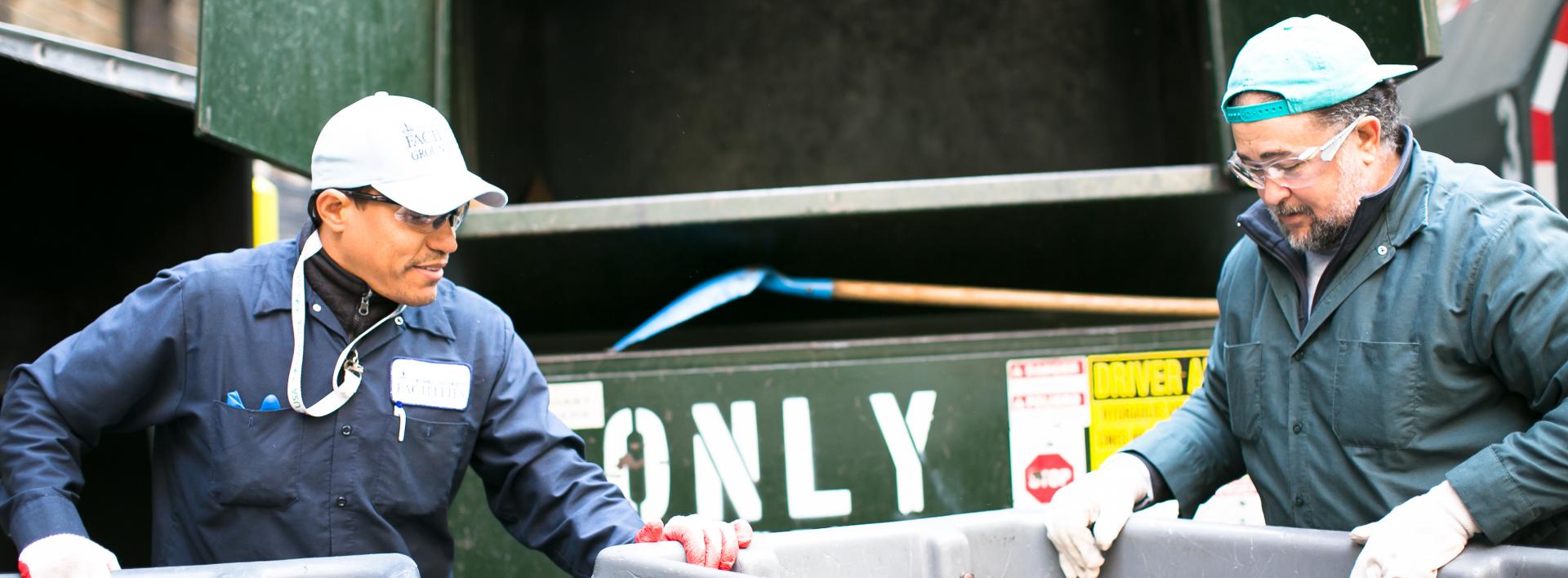Waste
“Every week, the average New Yorker throws out nearly 15 pounds of waste at home and another nine pounds of waste at work and in commercial establishments. Altogether, in New York City this adds up to more than three million tons of residential waste and three million tons of commercial waste generated per year. To manage all of this waste, the City has developed a complex system to collect, transport, and dispose of waste. It is a system with an enormous impact on our neighborhoods, our environment, and our economy.” (OneCity Plan, p. 176).

The historic rise of waste generation in New York City has forced the NYC Department of Sanitation (DSNY) to reevaluate waste management in the city and continually look for new opportunities to minimize and recycle, as well as divert, waste. In 2012–2013, DSNY launched an organics pilot program for curbside collection of food scraps, food-soiled paper, and yard waste. Also, 2013 saw the expansion of plastic recycling collection to include all rigid plastics.
Columbia University has been working to align its waste management efforts with those of New York City.
The University acknowledges that waste reduction and diversion not only contribute to the preservation of resources, but also have cascading benefits both upstream and downstream through the local material management systems. Reducing or diverting material will save time, money, and other resources for Columbia, as well as eliminate many GHGs. The University is aware that reducing material quantity is only one dimension of a broader matrix. Accordingly, Columbia put forth a goal and outlined strategies to develop guidelines for socially responsible and environmentally preferable procurement that will empower members of the campus community to make purchasing decisions that are more aligned with the University’s Sustainability Principles.
The disposal and treatment of waste generated from Columbia operations results in GHG emissions at facilities not owned or operated by Columbia. Such emissions are accounted for as Scope 3 indirect emissions, and will be included within Columbia’s GHG inventory starting in CY 2018.
Columbia has made great strides to introduce many waste reduction and diversion initiatives on campus.
Diverting Recycling and Organics via Partnership with New York City Department of Sanitation (DSNY)
Waste management is a unique impact area in that so many department operations have a role. In a fruitful collaboration between Columbia Facilities and Operations and the DSNY, Columbia recycles all metal, glass, plastic, and paper products through receptacles placed throughout campus, including in laboratories. Columbia Undergraduate Housing and University Apartment Housing play a significant role in educating and engaging students and tenants to support these practices.
Universal and Chemical Waste Diversion
The Environmental Health and Safety Department (EHS) ensures that electronic waste and batteries are reclaimed and diverted from landfill, and proactively educates labs about ways to reduce environmental impact by both improving recycling and managing closely their chemical waste. EHS also manages an award-winning solvent recycling program that reduces chemical waste and annual expenses.
Sustainable Dining
Columbia Dining has recently become a Level 1 Certified Green Restaurant for undergraduate dining halls, through initiatives such as tray-less dining, purchasing only recyclable/compostable to-go containers, and volunteering to be the first university in New York City to implement an organics composting pilot program in partnership with DSNY. Given its success, this pilot program has informed the continued expansion of the DSNY program on campus and elsewhere in the city.
Office Furniture Reuse Program
Over the course of about 10 years, Columbia Environmental Stewardship has built a grassroots reuse program to swap University-owned furniture between offices and schools in need, keeping thousands of pounds of usable and often historic pieces out of landfill. To date, the University has also donated more than one million pounds of furniture to Columbia Community Service partners, as well as to disaster relief overseas. The University manages another award-winning program, Clean + Go Green, biannually, in which members of the Columbia community can bring items for donation or proper disposal, with the goal of diverting these items from landfill.
Vendor Partner Engagement
University Procurement has collaborated with vendor partners to establish a host of programs that help reduce excess waste generation at the University. Some of these include setting minimum order values with vendors like Staples that helps to cut down on associated emissions from delivery as well as avoid excess shipment packaging; partnering with vendors like Steelcase who champion reusable and interchangeable products; and negotiating a price that equalizes the cost between 22 percent recycled content paper and virgin content paper to incentivize campus stakeholders to purchase the more environmental option.
Outlined below are the goals and corresponding strategies for the Morningside campus.
Goals:
Columbia will develop baseline metrics for all waste streams and calculate the University’s first waste diversion rate. This will allow the University to set a waste diversion and waste-to-landfill reduction goal, ultimately track additional Scope 3 emissions, and enhance programs to achieve these goals by 2020. Columbia will work toward the longer-term aspiration of aligning with NYC’s OneNYC waste-to-landfill goal by 2030.
With respect to GHG emissions, Columbia’s goals within the 2017–2020 plan horizon are to:
- establish CY 2018 Base Year GHG inventories for select waste streams; and
- define an absolute GHG reduction goal for CY 2020 Identify specific strategies for meeting the 2020 goals and a roadmap to meet long-term aspirational goals.

